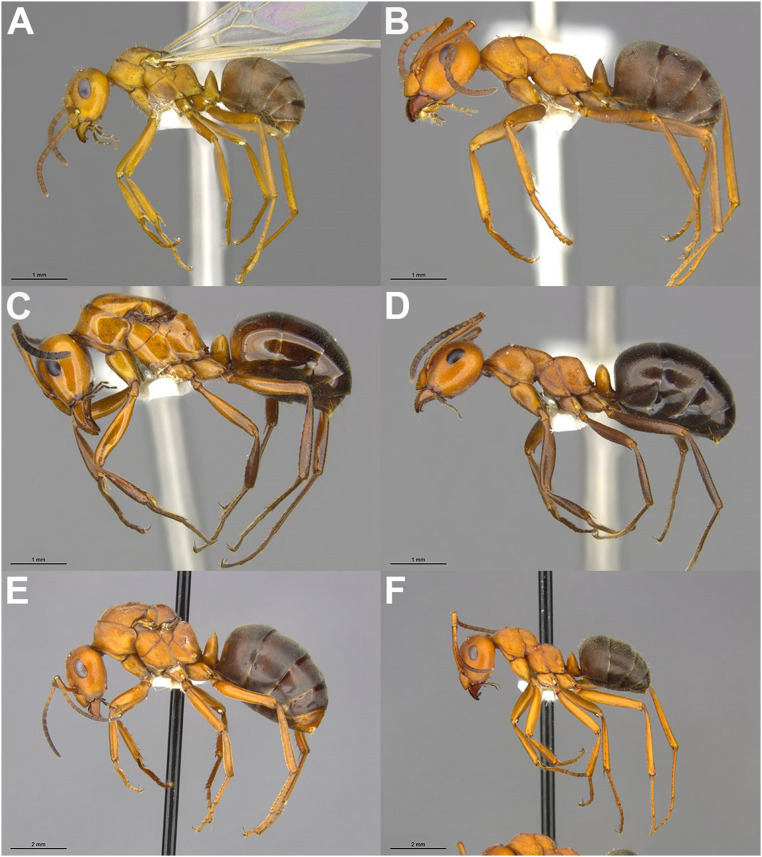Fig. 3.
Convergent evolution of queen miniaturization in temporary social parasitic Formica ants. Queen miniaturization evolved in the F. difficilis (A and B) and dakotensis (C and D) species groups. In comparison, queens in the integra group (E and F) show a pronounced queen–worker dimorphism typical for Formica ants. (A and B) Queen (A) and worker (B) of a hitherto undescribed F. difficilis group species showing one of the most extreme cases of queen size reduction known in ants. (C and D) Queen (C) and worker (D) of F. reflexa representing a second, independent evolutionary origin of queen miniaturization, which is less extreme than in the difficilis group species. (E and F) Queen (E) and worker (F) of Formica ravida demonstrating a typically sized queen with morphological modifications related to wing bearing and reproduction that are absent from the worker. Note that the F. ravida individuals are significantly larger than all other ants depicted here. (Scale bars, 1 mm in A–D and 2 mm in E and F.) Specimen identifiers are as follows: (A) MCZ 574034, (B) MCZ 574022, (C) MCZ 525288, (D) MCZ 525283, (E) MCZ 552096, and (F) MCZ 575163. Photographs are by Patrick McCormack. Images copyright President and Fellows of Harvard University.

